Gender and Change in the Spotlight
Report on the 4TH Global Symposium on Gender in Aquaculture and Fisheries
1-3 MAY 2013, YEOSU, KOREA
Download as: Pdf + photos ![]() || Pdf
|| Pdf ![]()
Fishery changes, caused by modernization and mechanization, globalization and environmental disasters, shift the working spaces, continually destroy and create jobs and livelihoods, and bring greater overlaps in women’s and men’s roles in the household, factory and market place.
________ Fishery changes shift working spaces, create and destroy jobs and bring overlaps in women’s and men’s roles.. ________“Gender and fisheries studies, therefore, are increasingly addressing these changes and how women and men were affected by them,” said Dr Nikita Gopal who led the Program Committee that organized this highly energetic and successful event. “For example, small changes such as bringing migrant labor into Japan’s oyster industry and large changes such as formalizing cross-border fish trade in Cambodia brought positive changes for some women and setbacks for other women and men, including the elderly. However, overall, GAF4 also continued to fill out the global picture showing that women and gender issues are still generally not on the radar of the fishery sector.”
The present report puts the spotlight on key results and discussion presented over the 3 days of GAF4. In all, 28 oral presentations, one poster and four mini-workshops/panels were given. Feedback declared GAF4 the most successful and highest quality of the 6 women in fisheries/gender in aquaculture and fisheries events held by the Asian Fisheries Society over the last 15 years [1].
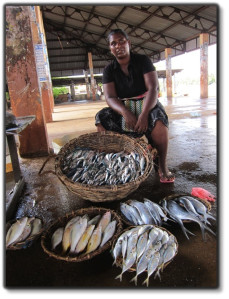
Woman fish vendor, Sri Lanka. Source: Angela Lentisco
We highlight four major threads of GAF4: (1) the gendered impacts of fishery sector change, (2) gender assets and roles, (3) challenges and tools to meet future needs, and (4) the road to mobilization to achieve gender equality in aquaculture and fisheries.
Out of these threads, researchers and grass roots representatives will conclude that they need to suspend pre-conceived ideas about gender roles and relationships because many of these are in flux. Researchers need to develop further and make better use of rigorous qualitative social science research methods. Through their participatory nature and to ensure ethical approaches, such methods will bring researchers and grass roots participants closer, which is an essential step in mobilizing support for gender equality.
________ … fisheries gender researchers must engage with grass roots participants … ________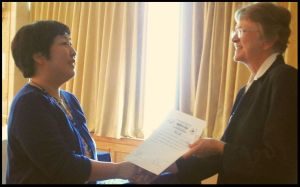
Kumi Soejima receiving the GAF4 Best Paper Award from Meryl Williams
The AquaFish-CRSP Best Paper prize was won by Kumi Soejima (Japan) for her paper “Changes in the Roles of Women and Elderly Persons within Oyster Aquaculture in Japan.” The AquaFish-CRSP Best Student Paper prize was won by Piyashi Deb Roy (India) for her paper (with R. Jayaraman, M. Krishnan and K. Criddle) “Importance of Mangrove Conservation and Valuation to Women – A Case Study of Pichavaram Mangroves in India.”
A special part of GAF4 was the Special Session in Honour of Dr M.C. Nandeesha, sponsored by the AquaFish-CRSP and dedicated to the life and work of Dr Nandeesha who established the AFS gender in aquaculture and fisheries work. GAF4 was supported by the Asian Fisheries Society, grants from the AquaFish Cooperative Research Support Program of the USA (AquaFish CRSP), the Norwegian Agency for International Development (Norad), the Indian Council for Agricultural Research, the Network for Aquaculture Centres in Asia-Pacific (NACA), the Korean local organizing committee for the 10th Asian Fisheries and Aquaculture Forum, and the home agencies of the many presenters and participants.1. NOTHING STANDS STILL: THE GENDERED IMPACTS OF FISHERY SECTOR AND PERSONAL CHANGE
Fish production, processing and trade are all changing, interacting with women’s and men’s lives and their business decisions, often in surprising ways. The first presentations summarized in this section on gendered change concern the changes occurring in the ‘normal’ course of sector change; the second set address the impacts of changes such as acute natural disasters and climate change.
Fish Trade and Processing
Eight years after her earlier study [2], Kyoko Kusakabe revisited the situation of women trading fish from Tonle Sap in Cambodia across the border to Thailand. The trade has changed: fish for export has declined, trade is now formal and other economic opportunities have opened up in Cambodia, leading to different outcomes for different women traders. Some savvy traders grew to become larger traders then moved to other businesses; others grew and went bankrupt; some maintained medium sized businesses and took in Vietnam and Thai imported fish; others stayed small; and some new ones entered. The outcomes demonstrated an interplay between the economic positions of the traders and influences from their own changing life stages and changing responsibilities, including reproductive responsibilities. The outcomes challenged earlier assumptions and exposed contradictions. For example, women could not have dominated trade because it was suitable “women’s business,” and still succeeded in what is a seen as a risky, dangerous and competitive business.
_________ .. competitive, risky and dangerous Cambodian cross-border fish trade challenges the assumptions of “suitable” for women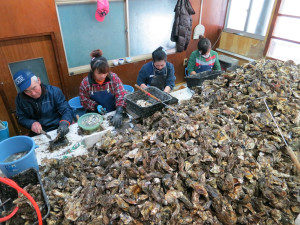
Japanese male oyster farmer and Chinese women employees shucking oysters. Source: Kumi Soejima
In Japan, local young women and elderly women and men have long been employed in shucking oysters, keeping smaller family farms viable, especially in the main farming area around the Seto Inland Sea. But the industry is now undergoing many changes. Kumi Soejima’s prize-winning case study in Oku town, Okayama Prefecture delved into how the apparently small act of bringing in young Chinese women workers had far reaching positive and negative impacts on women and men. Local women and elderly women and men lost jobs that gave them a sense of purpose in useful roles, and oyster enterprises developed along polarized paths, some stagnating in adhering to traditional practices, others scaling up and diversifying their oyster products. Some women in oyster-farming families, according to their individual means and preferences, have taken the opportunity of being freed from the shucking work to become more significant business actors in family enterprises. Among the massive changes in the Japanese oyster industry, the gender changes are significant, complex but little studied and remedial action to assist those affected, especially the elderly, are not happening.
When GAF4 was held in Yeosu in early May, the world was still reeling at the mounting death toll (eventually 1,127 people) in the collapse of a Dhaka, Bangladesh, building that housed export garment factories. When Mohammad Nuruzzaman spoke about social justice and rights of 50,000 workers (80% of them women) in 90 shrimp and prawn processing factories in Bangladesh, he addressed a sensitized audience. The processing sector has been harshly criticized locally and internationally for not complying with labour laws and basic human rights. To overcome these problems and spurred by EU and US trade sanctions, the United Nations Industrial Development Organization (UNIDO) joined with the Bangladesh government and the export industry in developing manuals, training trainers on the labour laws and their implementation, assessing compliance and interviewing workers over their conditions. Progress is perceptible but still leaves much to be desired. Awareness has been raised but many top executives are still not convinced; the intermittent nature of the processing loads means that much work is contract labor and compliance is thus harder to achieve; and men still fare better than women in the workplace.
Nuruzzaman contrasted three different viewpoints on the women’s labor conditions in the processing factories – the patriarchal, the feminist and the neutral views (see table). Each of these views has a degree of truth and some shortcomings. New trade unions show some promise of redressing female and male worker’s injustices in the fish processing workplaces. However, vigilance is needed as the export sector is likely to still continue to develop strongly and be under pressure to keep costs low to ensure profits.
Patriarchs’ View
|
Feminist’s View
|
Neutral View
|
Source: Md Nuruzzaman
Aquaculture and Fishery Production Changes
Aquaculture in Norway is one of the greatest global success stories. Norway’s farmed fish production overtook wild-capture fish production in 2005, thanks largely to increased efficiency in Atlantic salmon (Salmo salar) production. But, Bodil Maal (Norway) revealed, the 600% increase in salmon production since 1990 had been accompanied by a per employee production increase of 450%, resulting in nearly job-less growth. More worryingly, women’s employment in the salmon industry plummeted from 20% in 1990 to just 9% in 2010. This was largely due to the concentration of farm ownership, accompanied by centralization and heavy mechanization of operations that decimated family farms and undermined local community ownership. More than half the production is done by just 6 stock-exchange listed companies.
________ Norwegian salmon farming’s growth has been almost jobless. Women have declined from 20% to 9% of the workforce..
At the beach, women fish buyers meet a ring seine fishing boat on its return from the sea. Source: Nikita Gopal
In India, the state of Kerala is the most important fishing state in terms of its share of exports (40%) and the intensity of production relative to coastline. Since the 1960s, fisheries mechanization has been among the most relentless transformations but its positive and negative consequences on gender and other socio-cultural dimensions has not been well studied, according to Nikita Gopal. She and colleagues analysed the largely negative outcomes for women in the offshore ring seine fishery, stake net fishery and clam fisheries of the backwaters. Conducted by the Latin Catholic community, the capital intensive ring seine fishery has become more so. As the landings have moved from beaches into harbours, women fish processors and traders have been marginalized and fish handling has become organized and taken over by men. The stake net and clam fisheries are operated by the Hindu Deevara community. Stake nets rely on traditional rights to the fishing sites. Women are important in processing the landed stake net catch. Stake net site inheritance and granting of rights as women’s dowry has been suspended for two generations as the government stopped formal support for the area rights. Widows and single mothers often hold and lease out area rights to survive. In clam harvesting, women once harvested clams along with the men but men have taken over and mechanised the fishery, effectively restricting the women’s work to shucking and marketing the meat. In the cement industry, the shells of the black clam (Villorita cyprinoides) are used as lime because of their high calcium content.
Jenny Shaw and Leonie Noble (a researcher and a fisher and community leader, respectively, both from Australia), used Photovoice to investigate the community impacts of environmental and fishery change in Houtman Abroholas, low islands off Western Australia that are at the edge of severe climate and resulting fishery impacts. Fished for 100 years, the islands entered a new phase of community fishery consultation in the 1990s under a women state premier. Unfortunately, this consultation was discontinued under subsequent conservative governments and women’s inputs to the consultation process were lost, to the detriment of community-friendly management decisions on the climate-affected western rock lobster (Panulirus cygnus) fishery. The investigation graphically documented the devastating collapse of a once-vibrant community and its social, cultural and physical assets [3]. Women and families have suffered loss of services, long absences and stress of reduced incomes from husbands, sometimes leading to domestic violence and loss of inter-generational connections. The study made a compelling argument not only for including women in community leadership and consultation but also in fishery management decisions. Women postulated that a different management regime (seasonal closures rather than quotas) could have saved the islands’ communities as well as the fishery.
______ ..listening to women’s voices on fisheries management may have secured community survival in remote Australian islands _________
Odotsu women processing seafood, Japan. Source: Sun-Ae Ii.
In her poster, Sun-Ae Ii presented an anthropological study of two remote fishing villages in Miyazaki Prefecture, Kyushu Island, southern Japan. She first traced nearly a century of fishery change in two villages close to each other – Meitsu and Odoutsu. The Women’s Divisions of each of the local village Fisheries Cooperatives were formed in the mid 1970s. Although both villages have depended on tuna and other pelagic species, Meitsu tends to have larger vessels and the fishing and marketing is mainly done by men; although women fish with their husbands in the smaller scale fisheries. In Odoutsu village, the generally smaller and more local scale of fishing has created more space for women to work in processing and marketing. In both villages, the Women’s Division members regularly give fish preparing and cooking lessons to primary and high school student, promoting continued fish eating to the young.
Angela Lentisco shared some lessons learned from the Spain-FAO Regional Fisheries Livelihoods Programme (RFLP) of South and South East Asia for which she is the gender advisor. RFLP is taking a principled approach to development and turning up pleasant surprises in traditional gender role reversals. In a number of countries, RFLP finds that men are providing support to their wives who were carrying out alternative livelihoods activities. For example, in Viet Nam, husbands are helping their wives with chicken raising, while in Sri Lanka the men are supporting their wives’ handicraft group and also making home gardening a family activity. RFLP teamed up with the Vietnam Women’s Union to hold workshops to raise awareness of gender issues amongst members of fishing communities. A large number of men (approximately 40%) were also involved and this helped dispel the impression that gender was ‘women’s business’ and led to far more useful discussions on gender roles in the community. In Sri Lanka, going out to sea to fish is almost exclusively the role of men. However, by involving women in RFLP’s safety at sea training for fishers, women learned about the importance of life jackets and other basic safety steps and encouraged their husbands, brothers, fathers and sons to adhere to them.
Climate Change and Gender in Indonesia
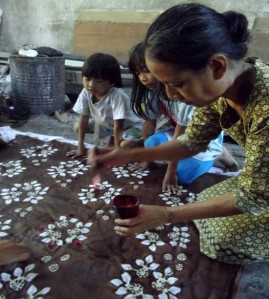 Pata Regency in Central Java, Indonesia, is known as “milkfish town,” for the milkfish (Chanos chanos) that is cultured there in brackishwater ponds. However, as Fitria Majid and her colleagues Indah Fitri Purwanti and Indah Susilowati reported, farm productivity is declining already from the impacts of climate change, especially erratic rain, rising sea levels and reduced salinity. Farmers are aware of the changes and ongoing research is being targeted at involving the whole family unit in finding solutions for mitigation and adaptation, both in fish farming and in outside economic and social realms.
Pata Regency in Central Java, Indonesia, is known as “milkfish town,” for the milkfish (Chanos chanos) that is cultured there in brackishwater ponds. However, as Fitria Majid and her colleagues Indah Fitri Purwanti and Indah Susilowati reported, farm productivity is declining already from the impacts of climate change, especially erratic rain, rising sea levels and reduced salinity. Farmers are aware of the changes and ongoing research is being targeted at involving the whole family unit in finding solutions for mitigation and adaptation, both in fish farming and in outside economic and social realms.
Gender Impacts of Disasters in Philippines
As three papers at GAF4 illustrated, acute disasters, e.g., oil spills and typhoons, present a specific form of change and the Philippines has been all too frequently the victim.
On August 11 2006, the oil tanker Solar I sank off Guimaras Island in the Visayas, central Philippines, and the resulting oil spill seriously affected the coastal livelihoods of nearly 20,000 people in over 3,600 households. Mary Barby Badayos-Jover and colleagues studied the aftermath in which militaristic top-down – and male focused – emergency responses gave relief work to men, relegating the women and girls to greater reliance on household and outside work, and exposed them to greater domestic violence at home and sexual harassment in the emergency shelters. Gay Defiesta’s study of the same disaster found that women’s inshore and mangrove-associated fishing and the onshore activities they normally undertook to help their husbands were all temporarily wiped out by the spill. The fact that the remediation work and post-emergency support programs went predominantly to the men (64%, and mainly the more lucrative projects). Women lost most of their direct coastal fishing livelihoods and the fishery support they normally gave the men, but gained less from the rehabilitation, even when projects were more typically women’s work, such as vegetable growing. Both the papers stressed the importance of taking a gendered look at disasters and disaster recovery, as this disaster exacerbated women’s local economic marginalization.
In mid June 2008, Typhoon Frank (or Fengshen by its international name) cut through the Philippines, hitting hardest in and flooding 4 provinces of the Western Visayas. Fishing and farming were the main activities of those affected, according to Farisal Bagsit and colleagues who studied the aftermath. Unlike the Solar I oil spill, Frank affected household members equally and women and men worked in complementary ways to secure and protect the family assets, but gender differences did emerge in preferred coping and future avoidance mechanisms. Women gave priority to family physical and financial safety while men undertook more outward directed facilitation and managerial actions to protect the family.
2. A GREAT DIVERSITY OF GENDER ASSETS AND ROLES
Presentations from eight countries in Africa, Asia and West Asia (India, Indonesia, Korea, Malaysia, Philippines, Nepal, Nigeria and Oman), explored the spaces, assets and roles of women in aquaculture and fisheries.
India
The edible Indian oyster (Crassostrea madrasensis) seems to have good potential for culture based on natural spatfall. A project in the coastal community of Moothakunnam in Ernakulam District, Kerala, by Femeena Hassan and colleagues targeted women’s Self Help Groups (SHG) as a vehicle for testing socio-technical extension. The District has a high ratio of women to men but many women are not involved in the economy directly. The SHG’s were trained in rack and string (ren) culture farm management, the techniques and importance of depuration and hygienic post-harvest processing, including of value added and long life products. Early results show that the enterprises can be profitable. A longer term challenge will be to keep the women in charge if, as expected, the enterprises become profitable.
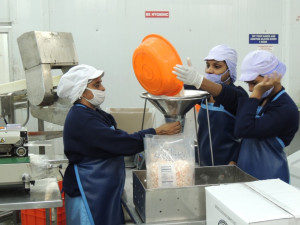
In the Kerala marine sector, many jobs have been created in the export processing sector. Source: Dinesh K.
Also in Kerala State, Dinesh Kaippilly and colleagues interviewed women in fisheries in the marine and inland sectors, and in tribal fishing and compared and contrasted their experiences. In the marine sector, most of the women were older than 60 years, had worked for more than 30 years in the fisheries, work long hours for little income and many suffer from health problems. In inland fisheries, the women interviewed were mainly involved in the hard physical work of collecting and marketing clams (V. cyprinoides) [4]. Due to the difficult nature of their work, they suffered even more than the coastal women from health problems, and earned less. In accord with their culture, the tribal fishers, women and men, fished together for the endemic food fishes including Mahseer (a highly valued cyprinid), undertaking the long and physically demanding fishing trips. Compared to the former two groups the third group faces less health-related issues from their work front. Women from all the three populations contribute significantly to the daily income and protein security of their families.
The Pichavaram mangrove area of Tamil Nadi, southeast India, bore the brunt of the 2004 Indonesia Ocean tsunami, and one village, MGR Thittu was almost totally destroyed. Piyashi Deb Roy used this village as a study site to estimate the value villages now put on mangroves for coastal protection. Her presentation won the Best Student Paper Award. Using contingent valuation methods, she investigated village people’s willingness to pay for mangrove protection. Slightly more women (79%) than men (67%) were willing to pay. Men, on average were willing to pay more than women, but the spreads of hypothetical payments were large for both women and men. Women’s reasons for being willing to pay were wide ranging, from ecological (e.g., protection against storms), to cultural (e.g., fisheries and firewood), for family livelihoods (e.g., crab fattening, mangrove nurseries), ethical (e.g., a place of worship) and recreational uses in their leisure time. The women made a strong case for being given management responsibility for the mangroves, given their wider use and appreciation of the many values of the mangroves. Their stewardship could be helped through training to realise their life and livelihood interests.
___________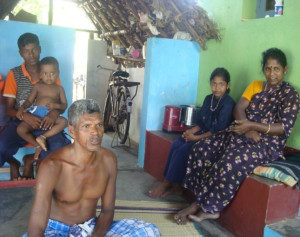
Women and men report a different willingness to pay and different reasons for mangrove conservation of Pichavaram mangrove, Tamil Nadu, India. Source: Piyashi DebRoy
..women are prepared to pay for a wider range of mangrove ecosystem services in community devastated by 2004 Indian Ocean tsunami
___________Indonesia
In Pekalongan and Tegalon on the north coast of Java, Indonesia, women small scale sellers of fresh fish in baskets can access several different sources of finance. Zuzy Anna reported on quantitative economic analyses of income and returns on investment that compared cases with finance from middlemen, cooperatives and rural banks and those who took no credit. Women with finance from cooperatives had the best income performance and cooperatives were the most efficient in delivering finance. In terms of effect on income and efficiency of delivery, middlemen were the least efficient Overall, the women were very disciplined in their borrowing behaviour. GAF4 participants debated the strengths and weaknesses of cooperatives, as many do not survive long term. In the study reported, however, two of the cooperatives were very strong and effective.
Korea
In Gangwon Province, Korea, women are now 30% of the fishery workers, up from less than 10% in 1995, although the total number of fishery households is dropping. Myoung Hee Yeo found that more than 80% of the women are over 45 years old and most were in fishery support roles. Although more than half of the women actually contributed more than half the family income, they still saw themselves in subordinate roles. Low income and hard physical work were causes of work dissatisfaction. On a more positive note, the study found that more women were now (2012) identifying as professional persons than in 2005.
Malaysia
Zumilah Zainallaluddin and her colleagues explored wives’ and husbands’ perceptions of their roles and responsibilities in pond and cage aquaculture enterprises in Kuala Besut, Terengganu, Malaysia. Spouses tended to carry the same views on who did what in the domestic sphere, but their views differed with respect to aquaculture roles. Up to 22% of women reported various contributions to many cage and pond culture activities but only one husband (out of 51) recognized his wife’s work in the cage culture activities and none recognized the women’s contributions in the case of pond culture.
T.A. Hamid reported on a survey of brackishwater and freshwater aquacutlurists from Kuala Besut, Terengganu, almost all of whom were men. Most respondents had cash savings, more than half owned land and a small number had other assets. Their poverty rates were 12% (freshwater) and 15% (brackishwater) and more research is planned to investigate the impact on the fish farmers of the national poverty eradication programs.
Nepal
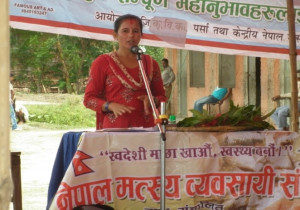
Nepal women farmer who became the new cooperative president. Source: Sunila Rai.
A successful sequence of projects introduced polyculture of carp and small indigeneous species (SIS) to women farmers, predominantly of the important Tharu ethnic group from the foothills of the Himalayas, reported Sunila Rai. The SIS (14% of production) were intended mainly for household consumption because of their high vitamin A and iron levels, and the carp (86% of production, six species) for sale. Bio-technical problems were sorted out in the early years of the project in Chitwan and Kailali districts and impact studies showed that farmers consumed nearly half their production, giving them a fish consumption rate twice the national average. In addition to nutritional and income benefits, the training and project experiences built collective assets such as confidence and local cooperation. Individual assets also grew. Leaders emerged, such as one woman who rose to become the cooperative president and another who became a technical field supervisor.
Nigeria
Women in Nigeria dominate in artisanal fish capture and fish marketing. In Ondo State, southwest Nigeria, Taiwo Mafimisebi studied the financial returns of each of these groups, what affects them and how the returns might be improved. The artisanal women fishers had, at most, primary education while half the marketers had secondary education, but the fishers achieved significantly greater profits than the marketers. Both of these profitable groups contributed most of their profits to household income, and put 22% (fishers) and 31% (marketers) back into their businesses. Despite their profits, both groups face increasing challenges and would benefit from better collective organization to access government support and bank credit to improve their enterprises.
Oman
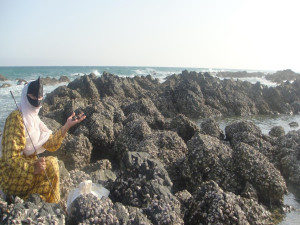
Omani women fishing for gastropods (rahas) in Al Wusta region. Source: Khalafan Al Rashdi
Many official reports from Arab countries say that women do not fish due to religious and cultural reasons. But in Oman, an old saying is that “behind every boat, a woman,” referring to the women’s activities in all stages of fishing. Modern Oman, however, is reducing women’s fishing space but, as Khlfan Al Rashdi found, in special niche fisheries women were still active. In Al Wusta Region, near the ‘empty quarter” of the Arabian peninsula, Bedouin women harvest gastropods (locally called rahas), echinoderms (especially high value sea cucumbers), cephalopods and bivalves. In the marine snail fishery, women control the whole operation from collecting, processing and selling the dried meat and the operculums (which are mixed with frankincense, burned and used as perfume) to middlemen. In the case of the overfished sea cucumbers, women make up half the fishers in the Mahout area and work on contract to a trader. The women, whose work is supported by their families, are mainly literate, married and have children. The biggest constraints the women experience are the long distance to the fishing sites and the low price they obtain for their products.
_________ Omani women fish for marine snails, sea cucumbers and other market products _________Philippines
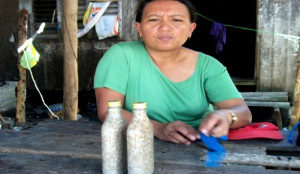
Woman selling green mussels, Samar, Leyte, Philippines. Source: Marieta Banez Sumagaysay
In the Philippines, green mussel (Perna viridis) farming first began in the 1960s and in 1975 in Samar, Leyte, where Jiabong is the main center, according to Marieta Banez Sumagaysay. Although the industry is male dominated, through a multi-scale value chain analysis, she found that women and girls occupied roles all along the value chain. Except in mussel processing and mussel trading, overwhelmingly the roles entailed non-paid extensions of home work which did not meet the women’s practical gender needs, e.g., for income, healthy working conditions, or their strategic gender needs for self esteem and better control over their own lives. These roles included in the selling and procuring of bamboos poles for the farms, cleaning of mussels at harvest, and preparing the mussels for market. Although the mussel industry has many laudable features such as its sustainable nature and its support of many jobs, new approaches are needed to engage women in more powerful and recognized positions to make the industry more gender equitable.
Philippines is the country with the least gender gap in Asia, and one where three-quarters of the people live in aquatic agricultural systems (AAS) – “diverse farming systems where families cultivate a range of crops, raise livestock, farm or catch fish, gather fruits, and harness natural resources such as timber, reeds and wildlife.” In these areas, poverty rates are three times the rates of other areas. Alice Ferrer reported how, at 8 AAS sites in the Visayas and Mindanao regions, preliminary scoping studies had found women’s and men’s roles were both expanding. Women are taking new and greater roles in the productive spheres, including in rice farming, e.g., negotiating farm inputs, copra growing, e.g., climbing coconut trees, and in actual fishing so that more money stays in the family. At the same time, men and youth are taking more responsibility for looking after children at home and getting them off to school. Women’s community roles are expanding, such as helping in the bantay dagat (community coast guard).
3. CHALLENGE, INSTITUTIONS AND TOOLS TO MEET FUTURE NEEDS
Empowerment and Access to Productive Tools
Two GAF3 presentations looked into the problematization [5] of gender issues in fisheries through women’s empowerment concepts and the access of women to productive tools.
Poh Sze Choo (Malaysia) explored in depth the different concepts of power and empowerment used in development. She used the concepts as a frame within which to assess gaps in the women/gender and fisheries studies to date, especially as reflected by those presented in previous AFS WIF/GAF events. She noted how most studies addressed the local and household level and rarely how women’s lives were impacted by broader scale or sectoral processes, with the exception of a few works on global warming and globalization. Many project studies focused on economic empowerment of women, and ignored important other meaningful dimensions of empowerment. She presented three power frameworks, including Longwe’s [6] practical schema that has a hierarchy of empowerment: welfare, access, conscientisation, mobilisation, and control. Although economic empowerment may be an important first step, it is rarely sufficient to get women beyond the lowest level (welfare), particularly through project-based help, as this is usually short lived.
Angela Lentisco explored whether improved income, nutrition and empowerment would result from women’s ownership of productive tools such as access to fish directly (by fishing) or indirectly (by buying fish, getting it directly from male family members or by exchange, even in some cases for sex). Major impediments stand in the way of women’s access, however, particularly because of assumptions about the subsistence level of women’s work which keeps them below the radar and out of contention for formal help and representation. Women are further put down if they are displaced from supply chains by modernization, mechanisation and globalization, and/or lose access to new technologies (sometimes developed specifically for them, such as that described by Femeena Hassan in Kerala) and fisheries, when the new industries become profitable. Disparaging perceptions of women and their suitability for fisheries work, plus their own self-perceptions and feelings of inadequacy can also hold them back. Specific cases show, fortunately, that these negatives can quickly be turned into positives with active interventions to build self-confidence, knowledge and organization to create the necessary access to productive tools. To move forward, a discourse on the best forms of collective action is still needed within each fishery. Should women aim for a perspective that is integrated (with men’s organizations) or independent (with women-only organizations)?
Steps Forward in Key Institutions
With respect to gender, an oral presentation and two workshops gave insights into what is happening in aquaculture and fisheries research workplaces and their work programs.
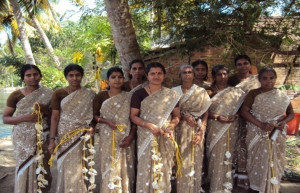
A women’s Self Help Group in Kerala with oyster longlines (ren) ready for deployment. Source: Femeena Hassan.
According to Dr Meenakumari, India’s national leader of fisheries research, (presented by Nikita Gopal), the number of women professionals in Indian fisheries is gradually increasing, as indicated in the workforce statistics from the Indian Council for Agricultural Research. In 2001, women were 14% of the professionals, in 2012 they comprised 20%. In classification, just over half are senior or principal scientists and more than 60% of the PhD holders have done their studies in more than one state, and a similar percentage have moved institutions for work. Women tend to have led fewer projects than men and not taken advantage of as many training opportunities. These statistics lead to suggestions for women professionals to improve their careers by stepping up for leadership and training opportunities, although they have already shown their preparedness to move for education and work.
Norad-NACA Workshop on Mainstreaming Gender in the Network of Aquaculture Centres in Asia-Pacific Programme
NACA took advantage of the presence of a number of gender in aquaculture experts to conduct a workshop to give it guidance on fulfilling its Governing Council commitment (March 2012) to mainstream gender into the NACA program. The workshop asked the question: how can the Network of Aquaculture Centres in Asia-Pacific (NACA) mainstream gender into its work program and what strategies can it develop to achieve this?
The workshop was co-chaired by Bodil Maal, Senior Gender Advisor of Norad and Meryl J Williams, mentor to NACA on gender. Dr Ambekar E. Eknath, the NACA Director General, started with an overview of the NACA work programme and referred to key opportunities for integrating gender issue. ‘Gender’ is one of the cross cutting areas that has been recently introduced by NACA. The main aim was how to bring gender into existing programmes, since gender is emerging as a major aquaculture issue. The presentation was followed by a lively discussion on the way forward for NACA.
_________ Network of Aquaculture Centres in Asia-Pacific seeks suggestions on mainstreaming gender __________The workshop will be reported in greater detail by NACA, but what follows is a short summary of outcomes.
NACA is an important inter-governmental platform for Asia-Pacific, the region that produces the vast majority of world aquaculture product and that supports most of the fish farmers, therefore, it should take a leading role on raising the profile of gender equality opportunities and issues. Further, its excellent track record in publishing and for collaborative studies makes it an ideal platform for three priority actions.
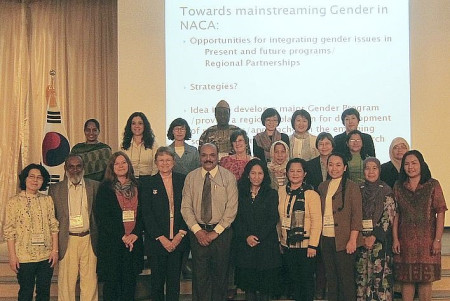
A women’s Self Help Group in Kerala with oyster longlines (ren) ready for deployment. Source: Femeena Hassan.
First, NACA should develop a thematic gender gap report for Asia-Pacific aquaculture. The report should address what is being done in member countries, what needs more attention. The paper should lift the profile of what countries are already doing and help raise NACA’s profile as a champion on gender in aquaculture. The gender gap report should be accomplished by using experts in member countries and collaborating with other regional or international bodies.
Second, NACA should craft clear messages, in simple and concrete language on why women are important in aquaculture, what the problems are to their greater contributions, and endeavour to have women’s organisations and policy makers rally to improve the situation. Do not complicate the message and avoid complex, more academic gender terms.
Third, NACA should develop a project targeted at women entrepreneurs in aquaculture, at the SME level. This should be designed to fit with NACA’s Sustainable Farming Systems Programme.
Aquaculture Asia-Europe Meeting (AqASEM), Work Package 7 on” Empowering Vulnerable Stakeholder Groups in Aquaculture Community”
Zumilah Zainaludin, Jariah Masud and Tengku Aizan (Malaysia) introduced WP7 of the AqASEM program of the European Union’s 7th Framework Programme and Asian partners. Jariah Masud shared their experiences in conducting the 2012 Workshop on Gender Awareness [7] to introduce the basics of gender in aquaculture issues to policy makers, extension workers and scientists from five countries (Cambodia, India, Indonesia, Malaysia, Philippines). The first hurdle was identifying and attracting appropriate attendees. A pre-test showed that levels of gender and aquaculture knowledge differed widely from country to country and among attendees. For example, the Philippine attendees were much more knowledgeable. At the start of the workshop, some attendees were very reluctant, such as the “men with folded arms” who did not feel they needed to attend, and the scientists who felt that their work was already helping people. Attendees reported major shifts in their appreciation of the issues at the end of the workshop but have not been very responsive since. One such event is clearly not sufficient to make an impact on attitudes and follow-up is needed.

Participants at the ASEM gender in aquaculture training course, 2012 contemplate the basics. Source: Jariah Masud.
The workshop discussions will be reported in more detail by its organizers, but here are some highlights.
Workshop participants shared experiences in introducing and documenting successful and not so successful women’s aquaculture programs in the region and discussed the options for regional collaboration to follow up WP7. Gender support must be connected to the larger aquaculture industry issues, such as “sea grabbing” that can affect community and small scale farming and is resulting from the strong economic growth of the industry. Women’s needs also should be canvassed to ensure that policy and program priorities address them.
Research Methods
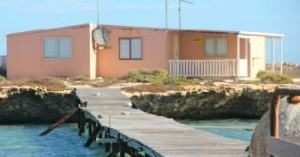
Closed and decaying infrastructure on the Houtman Abrolhos islands, Australia, following fishery management and climate changes that have more recently lacked full community consultation and excluded women’s views. Source: Jenny Shaw and Leonie Noble
For many attendees, Marilyn Porter’s (Canada) magnificent overview of what qualitative, feminist research methods could contribute to gender research in fisheries and the workshop she led was a highlight of GAF4. Marilyn gave an authoritative review of the rise of feminist scholarship from the 1970s and the early “add women and stir” methods, to the rise of rigorous ethnographic and qualitative approaches in which participants became partners in the research enterprise, not simply “subjects”. This dimension of the research can lead to extraordinary impacts, as reported by Jenny Shaw and Leonie Noble. The product of the community-based research on the impacts of fisheries management and climate change on the people of the Houtman Abrolhos (see above) was an award-winning museum exhibition called “Scene Change” that had a profound emotional impact on those who saw it, particularly fishers who felt deeply and personally touched.
____________ “Researchers have to get used to not having tables and graphs and still achieving profound insights!” said Marilyn Porter in her overview of qualitative methods ____________Applying qualitative methods does not deny that data – especially baseline and background information – are needed, but she urged the attendees to recognize that qualitative methods ask different questions, the answers for which often can’t be measured. In analysing the qualitative information gathered, researchers had to “get used to not having tables and graphs!” However, the non-quantitative methods were rigorous and, properly used, capable of delivery profound insights and explanations.
| – Interview research, especially in depth, open ended interviews |
| – Ethnography |
| – Cross cultural, comparative research |
| – Case studies |
| – Action, community based, participatory research |
| – Literature based research, content research |
| – Life story, narrative research, autobiography and oral history |
| – Visual, audio, dramatic, multi-media research eg photo research |
| – Historical research |
| – Diaries and journals |
In a going over a comprehensive list of methods (see table), Marilyn outlined the uses for which each was particularly suited and its challenges and the compromises that may be needed.
Some of the compromises may include the need to work through primary interviewers, e.g., due to time and language constraints, the confounding of results from research team interactions and hierarchies, and the dilemmas of what to do when negative social issues are discovered in the field, such as domestic violence and sexual exploitation of workers. The AFS GAF researchers need to take more notice of such ethical issues. Ethical questions pervade feminist (and therefore gender) research.
Marilyn concluded her presentation by saying that there are no actual “feminist methods”, just feminist use of good research methods that remain true to feminist principles of gender equality and can contribute valuable perspectives to fisheries research.
As a case study, she then generated an active examination of how more detailed information on the qualitative characteristics and motivations of women in the largely quantitative economic study by Taiwo Mafimisebi (see above) may have added additional value to the economic research.
4. GENDER EQUALITY IS ONLY POSSIBLE THROUGH MOBILIZATION
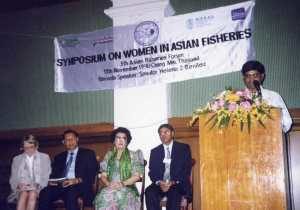
M.C. Nandeesha addresses the first AFS Women in Asian Fisheries Symposium, 1998, Chiang Mai, Thailand
In her presentation opening the session in honor of Dr M.C. Nandeesha (1957-2012), Meryl Williams showed how the AFS gender in aquaculture and fisheries efforts resulted from the specific and visionary efforts of just one person, Dr Nandeesha. She traced his early steps of holding symposia on women in fisheries in the Indian Branch of the AFS and in Cambodia and Indo-China countries, followed by getting a “toe in the door” at the triennial Asian Fisheries and Aquaculture Forums. The first activities were non-threatening ways of introducing the topic, e.g., a women in fisheries photo competition. He also brought in partners and worked to get the formal WIF/GAF symposia in AFS made academically respectable through well-published proceedings and awards. His own publications showed a concern for: (a) how institutions, such as CARE-Bangladesh, delivered on their policy promises on gender equality through changing their staff recruitment policies; (b) getting the basic facts and statistics together to track gender in education and research agencies; and (c) how the AFS was faring in electing women Councillors.
__________ Dr M.C. Nandeesha, who died last year, motivated the gender in fisheries efforts of the Asian Fisheries Society ___________He would not have been happy to have seen that, after nearly 30 years, the AFS Council had only about the same percentage of women Councillors as at the start (see table), although it had higher numbers in the 2000s.
| First Council (1984-1986) | 12% | 2 of 17 |
| Second Council (1986-1989) | 11% | 2 of 18 |
| Third Council (1989-1992) | 0% | 0 of 17 |
| Fourth Council (1992-1995) | 0% | 0 of 17 |
| Fifth Council (1995-1998) | 18% | 3 of 17 |
| Sixth Council (1998-2001) | 19% | 3 of 16 |
| Seventh Council (2001-2004) | 31% | 5 of 16 |
| Eighth Council (2004-2007) | 27% | 4 of 15 |
| Ninth Council (2007-2011) | 20% | 3 of 15 |
| Tenth Council (2011-2013) | 13% | 2 of 16 |
| Eleventh Council (2013-2016) | 13% | 2 of 16 |
Meryl concluded that Dr Nandeesha was a visionary committed to social justice, and had an intuitive understanding of how to motivate others to act and bring about institutional change. His loving wife, Rajeswari Dayal B said of him: “so though Nandeesh is not with us physically, his thoughts and deeds are there to guide us through these difficult times.”
In order to gather views and ideas of what works and what is still needed to strengthen networking in gender, Meryl Williams, Poh Sze Choo, and Dr M.C. Nandeesha before his untimely death, developed a survey of experts. The survey elicited 41 (78% from women) detailed and thoughtful responses, addressing the four step process of forming influencing networks (based on Actor Network Theory [8]).
The first step, Problematisation, in which the problems and the “actors” are defined, received the greatest attention from respondents, revealing that considerable progress made in general understanding of the issues, even though much more specific detail is needed for most fishery situations. Out of the wealth of detail, however, only weak strategic messages have been developed, although sufficient material is available to start to craft such messages. The set of actors is still small and limited in its extent. The second step, Interessement, in which others are recruited to the network, is still weak, but survey respondents provided a rich set of ideas on how to do it. They stressed the needs for leaders and champions in the right places, but felt that an active core group of these was still to emerge. Researchers and the grass roots organizations must get together if any progress is to be made. The third step, Enrolement, in which roles for action are defined and actors formally accept their roles, is even further behind Interessement. Clearly, little progress can be made until the critical people are convinced to step up.
The final step, Mobilisation, during which the primary actors act as spokespeople and start to mobilize the passive actors, relies on achieving much more progress with Interessment and Enrolement, unless a major opportunity for rapid progress can be found.
_________ Gender equity will not just “happen” in fisheries. Action is essential. __________In the ensuing discussion, participants stressed the importance of setting the agenda and getting the message out to other circles by building a common understanding with concrete examples and studies. Group members presented pros and cons and the challenges of holding standalone events on women/gender, noting the difficulties in getting sufficient attention at a mainstream conference such as 10AFAF, versus the problem that a significant number of GAF4 presenters were only able to attend because they were also presenting in other sessions.
Noting that the GAF events had been totally focused on research, many participants, including researchers, stressed that future events must consist of more than research presentations and workshop. They must include different types of sessions that engaged with the women and other workers in the sector who were working at grass-roots level.
After GAF4, a small group met to further discuss the next steps and agree an action plan, covering items from the immediate aftermath of GAF4 to what GAF5 would look like, the opportunities for other GAF events at forthcoming conferences. A small group agreed to follow-up on getting funding to develop a gender in aquaculture and fisheries “101” course. The action plan also included the need for a bolder strategy, networking with other networks of similar interests and the importance of developing and getting funded site-specific collaborative research to help improve the quality of the research.
GAF4 BACKGROUND INFORMATION
GAF4 (http://www.genderaquafish.com/) was supported by the Asian Fisheries Society, AquaFish-Cooperative Research Support Program (USA), the Norwegian Agency for International Development (Norad), the Indian Council of Agricultural Research, the Network for Aquaculture Centres in Asia-Pacific, the Korean host agencies of the 10th Asian Fisheries and Aquaculture Forum plus the personal support of presenters and their organizations. It was held as part of the 10th Asian Fisheries and Aquaculture Forum hosted by AFS and the Korean Fisheries Society, from 1-3 may 2013 in Yeosu, Korea. All supporters are gratefully acknowledged.
GAF4 was the 6th women/gender in fisheries/aquaculture symposium in the series hosted by the Asian Fisheries Society (AFS, www.asianfisheriessociety.org) over the past 15 years. Founded in 1984, AFS is a non-profit scientific society that promotes networking and co-operation between scientists, technicians and all stakeholders involved in fisheries (including aquaculture) production, research and development in Asia. Its ultimate objective is to enhance food security and income-generating opportunities for fisheries workers via sound management practices, environmentally sustainable development and efficient utilisation of the aquatic resources. At GAF4, 29 papers were presented, 28 oral papers and 1 poster, as well as four workshops. Presentations covered 16 countries Asia and Oceania: Australia, Bangladesh, Cambodia, India, Indonesia, Japan, Korea, Malaysia, Nepal, Oman, Philippines, Sri Lanka, Thailand, Timor Leste, Vietnam; Africa: Nigeria; Europe: Norway; Regions; South and Southeast Asia; Asia-Pacific, Global.
Credits for Photos in GAF4 Collage: (l. to r.) Sunila Rai (Nepal), Dinesh K. (Kerala, India), Dinesh K. (Kerala, India), Sunila Rai (Nepal), Photo Dr M. C. Nandeesha, Fitria Majid (Java, Indonesia), Md Nuruzzaman (Bangaldesh)
Website http://www.genderaquafish.com/ | Facebook http://www.facebook.com/pages/AFS-Gender-in-Aquaculture-and-Fisheries/181176555231544| Twitter @Genderaquafish | Flickr http://www.flickr.com/groups/genderaquafish/
NOTES
[1] The first five events were: 1998 Asian Women in Fisheries (Chiang Mai, Thailand), 2001 Global Women in Fisheries (Kaohsiung, Taiwan), 2004 Global Gender and Fisheries (Penang, Malaysia), 2007 2nd Global Gender and Fisheries (Kochi, India), 2011 3rd Global Gender in Aquaculture and Fisheries (Shanghai, China). See Genderaquafish.com for the proceedings and other information.
[2] Kusakabe, K, P. Sereyvath, U. Suntornratana and N. Sriputinibondh. 2006. Women in fish border trade: the case of fish trade between Cambodia and Thailand. In: Choo, P.S., S.J. Hall, and M.J. Williams (eds.). Global Symposium on Gender and Fisheries. Seventh Asian Fisheries Forum, 1–2 December 2004. Penang, Malaysia: World Fish Center and Asian Fisheries Society. Pp. 91-101.
[3] In May 2013, the museum exhibition based on this work won an award in its class in the Australian Museums and Galleries National Awards (MAGNAs).
[4] For more details, refer to the presentation by Nikita Gopal
[5] “Problematising simply means making something problematic, not taking it for granted, questioning assumptions, framings, inclusions, emphases, exclusions.” Source: patthomson.wordpress.com
[6] Longwe, S.H. 2002. Spectacles for seeing gender in project evaluation. Paper presented in GEM Africa Workshop, 16 November 2002.
[7] For an early news item on this Workshop see: Malaysian workshop upgrades knowledge, develops plans for gender equity in Asian aquaculture
[8] Callon, Michel (1986a). Some elements of a sociology of translation: Domestication of the scallops and the fishermen of St Brieuc Bay.” In: John Law, ed. (1986). Power, action and belief: A new sociology of knowledge. London: Routledge & Kegan Paul.
